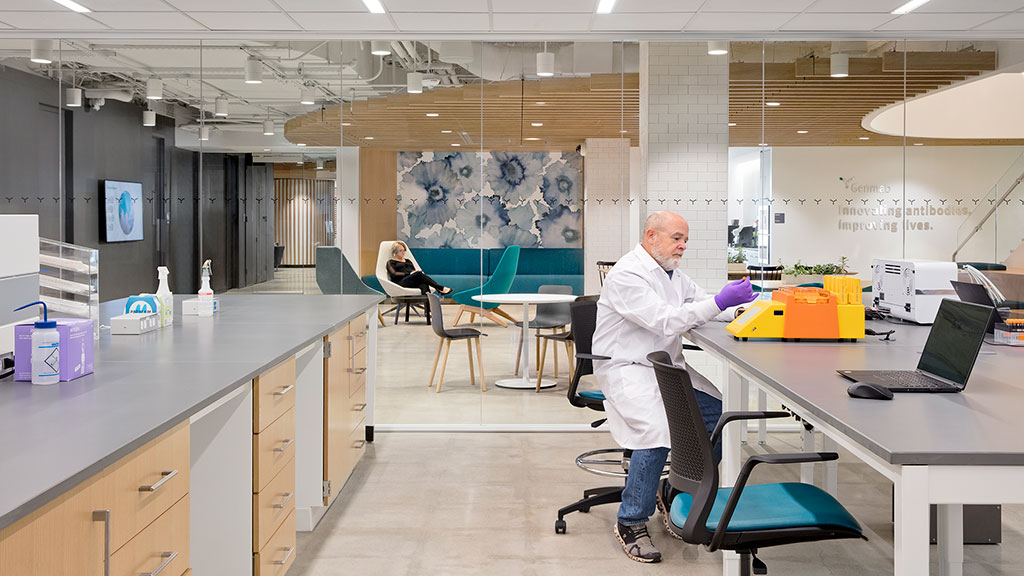In today’s fast-moving world of science, medicine, and technology, lab space is more than just a physical room — it’s the engine of discovery. Whether you’re working in pharmaceuticals, biotechnology, chemical testing, or academic research, the right lab environment is crucial for productivity, safety, and innovation.
Let’s dive into what lab space is, who needs it, what makes it effective, and how it’s shaping the future of science.
🧪 What is Lab Space?

Lab space refers to specially designed areas where scientific work takes place. These spaces are created to meet the unique needs of different research fields. They are equipped with advanced infrastructure such as water systems, ventilation, specialized tools, and safety features that make experiments and research possible.
Unlike regular office spaces, lab spaces must follow strict guidelines to ensure safety, cleanliness, and compliance with regulations — especially when dealing with chemicals, biological materials, or sensitive data.
🔍 Why Lab Space is Important
Lab spaces are not just about having a room to work in — they are built for purpose, safety, and innovation. Here’s why they matter:
- ✅ Boost Scientific Progress: Experiments and discoveries need the right setup to succeed.
- ✅ Ensure Safety: Labs are designed to reduce risks when handling chemicals, tools, and biological samples.
- ✅ Increase Productivity: With the right tools and layout, scientists can work more efficiently.
- ✅ Meet Legal Standards: Labs must meet regulatory and environmental standards to stay compliant.
- ✅ Support Collaboration: Modern labs allow researchers to work in teams, share ideas, and build solutions.
🧬 Who Uses Lab Spaces?
Lab spaces serve a wide range of users, including:
- 🧪 Biotech Startups
- 💊 Pharmaceutical Companies
- 🧫 Medical Testing Labs
- 🌱 Environmental & Agricultural Labs
- ⚙️ Engineering and Robotics Research
- 🧠 Neuroscience and AI Labs
- 🏫 University & Educational Institutions
- 🏭 Product Development and Quality Control Teams
From students running experiments to researchers developing the next big medical breakthrough, lab space is at the heart of it all.
🏗️ Types of Lab Spaces
There are different types of labs based on the nature of work:
1. Wet Labs
Designed for experiments involving liquids, chemicals, and biological materials. Wet labs include fume hoods, sinks, gas lines, and safety showers.
2. Dry Labs
Used for computer-based or theoretical work like simulations, modeling, and analysis. These are commonly used in physics, engineering, and data science.
3. Cleanrooms
Highly controlled environments with filtered air and low levels of dust or contaminants. These are essential for semiconductor, microchip, and pharmaceutical research.
4. Modular or Flexible Labs
Labs with movable furniture and equipment that can adapt to changing research needs. Ideal for startups or institutions with evolving projects.
5. Shared Lab Spaces
Also known as coworking labs, these offer flexible, cost-effective options for small companies or individuals who can’t afford full-scale lab ownership.
🛠️ Features of a High-Quality Lab Space
Creating or renting a lab space isn’t just about size — it’s about function. A well-equipped lab should include:
- 💨 Advanced Ventilation: For air safety and chemical handling
- 💡 Bright, Even Lighting: To prevent errors and support focus
- 🔌 Stable Power Supply: To support equipment like centrifuges, freezers, and computers
- 🚰 Water and Waste Systems: For cleaning, drainage, and chemical disposal
- 🔒 Security Systems: To protect sensitive data and materials
- 🧯 Fire and Safety Equipment: Extinguishers, alarms, and emergency exits
- 🪑 Ergonomic Furniture: To reduce fatigue during long research hours
- 🧺 Specialized Storage: For samples, chemicals, and personal protective equipment (PPE)
🧭 How to Choose the Right Lab Space
When looking for lab space, keep these questions in mind:
- What kind of research or testing will be done?
- Do you need wet or dry lab features?
- Will you work alone or with a team?
- Do you need a long-term lease or short-term flexibility?
- How much equipment do you need to store?
- Are you planning to scale or expand in the future?
Choose a lab that matches your research goals, budget, and safety needs.
🏢 Renting vs. Building Lab Space
Depending on your size and resources, you can either rent lab space or build one from scratch.
🧰 Renting Lab Space
Ideal for startups and small research teams. Shared lab spaces offer:
- Lower costs
- Access to shared tools
- Maintenance-free environment
- Networking with other researchers
🏗️ Building Lab Space
Better for large companies or institutions with specific research needs. This allows:
- Full control over design and safety
- Custom features tailored to your work
- Long-term space for growth and development
🌍 The Future of Lab Space
As technology evolves, so does lab design. Modern lab spaces are becoming:
- 🌿 Sustainable – Using eco-friendly materials and energy-efficient systems
- 🧠 Smart – Equipped with automation, data tracking, and remote monitoring
- 🔄 Flexible – Modular designs that adapt to different projects and teams
- 🤝 Collaborative – Open areas for group research, learning, and innovation
These changes support faster discoveries and smarter science — paving the way for the next generation of breakthroughs.
💼 Lab Space in Real Estate and Business
Lab space is now a growing part of the commercial real estate industry. Cities like Boston, San Diego, San Francisco, and London are seeing huge demand for lab space from:
- Biotech accelerators
- MedTech incubators
- Universities
- R&D companies
Investors, developers, and research parks are building new lab facilities to support this growing need.
FAQ’s
1. What is a lab space?
Lab space is a special area made for scientific research and experiments. It has the right tools, safety systems, and equipment needed for testing, development, and discovery.
2. Who needs lab space?
Scientists, researchers, biotech startups, pharmaceutical companies, and university students all need lab space to do their work safely and effectively.
3. What is the difference between a wet lab and a dry lab?
A wet lab is used for work involving liquids, chemicals, or biological samples. A dry lab is used for computer work, simulations, or electronic testing — no chemicals or fluids involved.
4. Can I rent lab space for a short time?
Yes! Many shared or co-working labs allow you to rent space by the hour, day, or month. It’s a great option for startups or small teams with a limited budget.
5. What features should a good lab space have?
A good lab space should have proper ventilation, water supply, power connections, safety equipment, storage areas, and enough room to work comfortably.
6. Why is lab space important for research?
Lab space provides a safe and controlled environment where experiments can be done accurately. It supports innovation, reduces risks, and helps researchers focus on their work.
Final Thoughts
Lab space is the foundation of scientific progress. It’s not just a room — it’s where ideas are tested, discoveries are made, and the future is built. Whether you’re a scientist, investor, student, or innovator, understanding and investing in the right lab space is a step toward meaningful change in the world.
Related Post
- mylovelyfurryfriend discover expert tips on dog health
- Infectious Diseases Updates – Stay Informed, Stay Protected!
- Wegovy For Weight Loss – A Breakthrough in Managing Obesity!
- Emergency Medicine Forum – A Hub for Fast-Paced Knowledge, Support & Updates!
- Pediatrics Discussions – Insights, Challenges, and Expert Advice for Better Child Health!





Leave a Reply